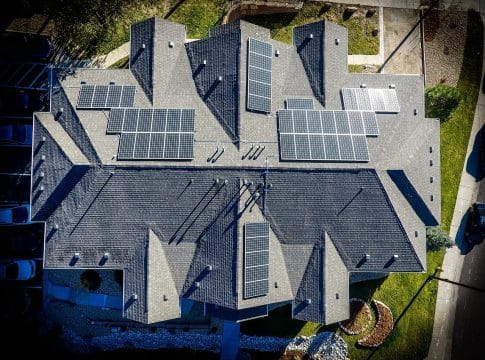Cobalt Crash: Why Prices Hit a 7-Year Low and What’s Next
Cobalt, a key ingredient in the batteries powering our electric vehicles (EVs) and devices, is facing turbulent times. Once a high-flying commodity, cobalt prices have now plummeted to levels not seen in years.
Cobalt prices have experienced a steeper decline than lithium. The European cobalt metal price hit a seven-year low of $12.75 per pound on August 19, 2024—a level not seen since October 2016. This price drop is largely attributed to weak demand for cobalt sulfate used in traction batteries, leading producers to shift focus to metal production for better profitability.
The increase in China-made cobalt metal exports to Europe has further pressured prices, with a 295.8% year-over-year rise in unwrought cobalt exports during the first half of the year.
Supply Glut: Why Cobalt Prices Are Plummeting
Glencore PLC, one of the top cobalt producers, has led the way in production cuts. The company reduced first-half output by 26.7% year-over-year. These cuts have been driven by lowered run rates at Mutanda and decreased grades and throughput at Kamoto.
Despite these reductions, the overall impact on the market surplus has been minimal, as companies like CMOC Group. continue to ramp up production, leveraging strong copper prices even if cobalt stocks need to be held until demand improves.
In light of these developments, S&P Global has downgraded its 2024 price forecasts for European cobalt metal by 4.4% to $13.69 per pound. Despite these downward revisions, there are some positive indicators for near-term demand.
Market players are anticipating a potential interest rate cut by the US Federal Reserve in September, which could lower financing costs for plug-in electric vehicles (PEVs) and improve economic conditions.
Additionally, China is expected to see a boost in PEV sales due to recently increased subsidies for vehicle trade-ins, offering 20,000 yuan for scrapping internal combustion engine cars in favor of new PEVs.
However, a broader recovery in the PEV market will require more than just these short-term measures. A sustained recovery will depend on improvements in consumer confidence, affordability, policy certainty, and continued investment in new models and infrastructure.
Glencore’s Gambit: Can Production Cuts Stabilize the Market?
The lithium and cobalt markets could also see divergent paths in the near future. While lithium producers are scaling back output in response to low prices, which may eventually balance supply with demand, cobalt production remains buoyed by high copper prices. This could prolong the market surplus and keep cobalt prices under pressure for a longer period.
READ MORE: Lithium Prices Hit New Lows: Can the Market Survive the EV Slowdown and Price Plunge?
Glencore CEO Gary Nagle has acknowledged the current oversupply in the cobalt market, predicting that it could persist for at least the next two years. This oversupply has been compounded by expanded production in Indonesia and the Democratic Republic of Congo (DRC), where cobalt is extracted as a by-product of nickel and copper mining, respectively. This dynamic limits the impact of low cobalt prices on overall production decisions.
Cobalt’s recent price trajectory has followed a classic pattern of boom and bust, while underscoring the volatility that has come to define the battery metals market.
Following a dramatic surge in 2017-2018, the market experienced a severe downturn, falling to $26,000 per ton by 2019. A similar pattern emerged this decade: cobalt prices soared to $82,000 per ton in March 2022, only to plummet to the current level of $24,900 per ton.
Chart from Reuters
China’s CMOC Group overtook Glencore as the world’s largest cobalt producer in 2023, with an output of 55,000 tons. CMOC’s expansion plans, particularly at its Tenke Fungurume copper mine in Congo, are expected to drive cobalt production to 100,000 tons by 2028.
How China and Indonesia Are Shaping Cobalt’s Future
Meanwhile, Indonesia has emerged as the second-largest cobalt producer globally, with production surging by 86% to 17,000 tons last year. This rapid increase is attributed to Indonesia’s extensive development of nickel mining and processing facilities. The country boasts a number of nickel-cobalt processing plants rising from 10 in 2023 to nearly 60 in 2024.
Historically, cobalt was primarily used in super-alloys for the aerospace industry, but demand has shifted towards EV batteries, which accounted for 73% of the 200,000 tons of cobalt consumed in 2023. Despite strong growth in lithium-iron-phosphate battery technology, which reduces the need for cobalt, the metal’s usage in EVs continues to grow, with a 12% year-on-year increase in May 2024.
However, demand growth has not kept pace with the surge in supply from the Congo and Indonesia. The market was oversupplied by 18,300 tons in 2023, following a surplus of 10,700 tons in 2022. Analysts from Macquarie Bank forecast that this surplus will persist until at least 2027, indicating continued downward pressure on prices.
The price decline has created opportunities for strategic buyers. China’s state reserves manager purchased 8,700 tons of cobalt in 2023 and plans to buy an additional 15,000 tons this year.
Boom and Bust: Cobalt’s Volatile Journey in the Battery Market
The Chicago Mercantile Exchange (CME) cobalt curve is currently in a pronounced contango, meaning that forward prices are higher than spot prices. This situation allows for profitable stock financing trades, though banks prefer to store financed inventory in locations where it can be easily sold, such as terminal markets.
Whether this marks the beginning of a larger trend remains to be seen. Still, the current market dynamics suggest that there will be a significant amount of cobalt looking for storage and trading opportunities in the coming months.
The International Energy Agency (IEA) forecasts a substantial increase in cobalt demand over the coming decades. Under its Sustainable Development Scenario, cobalt demand is expected to grow fivefold between 2020 and 2040.
The demand for cobalt, particularly driven by its critical role in electric vehicle batteries, is projected to triple by 2030. This anticipated surge underscores the need for new cobalt mines and deposits to meet the growing demand and support global sustainability goals.
As the market adjusts to these changes, participants will continue to monitor the interplay between supply, evolving battery technologies, and the pace of EV adoption, which will ultimately shape the future trajectory of cobalt prices.
The post Cobalt Crash: Why Prices Hit a 7-Year Low and What’s Next appeared first on Carbon Credits.



